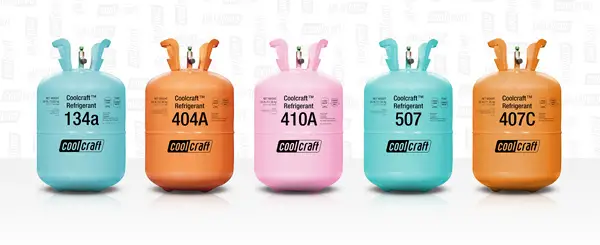Refrigerant leak detection regulations are more than just a mouthful—they’re a vital part of our global strategy to combat climate change. This may sound a tad dramatic, but it’s no exaggeration. Let’s untangle this complex web together, shall we?

Table of Contents
Brief Overview of Refrigerant Leak Detection Regulations
Imagine a world where refrigerant leaks are unchecked—your AC’s got the sniffles, and it’s polluting the air, raising temperatures. It’s not a pretty picture, right? That’s where refrigerant leak detection regulations come to the rescue.
The Importance of Leak Detection
The importance of leak detection is like the importance of a good night’s sleep—you don’t realize it until you’re deprived of it. Can you fathom a world with skyrocketing temperatures due to unchecked greenhouse gas emissions? No thanks!
Global Emphasis on Controlling Refrigerant Leaks
Globally, there’s been a massive push to control refrigerant leaks. Picture the nations of the world, big and small, all on the same team—Team Earth.
Understanding Refrigerant Leak Detection Regulations
The Essence of Leak Detection Regulations
Leak detection regulations are like the world’s superheroes, combating the villainous gas emissions. They’re here to ensure we all play by the rules, but what’s their origin story?
What are Leak Detection Regulations?
Leak detection regulations are rules designed to prevent harmful refrigerant gases from escaping into the atmosphere. Think of them as traffic laws, but for refrigerant leaks.
Why are they Necessary?
Without these regulations, it’d be an open season for gas emissions, a real Wild West! And who wants that?
Evolution of Leak Detection Regulations
These regulations didn’t just sprout out of nowhere. They’ve grown and adapted over the years, like a tree spreading its roots and branches.
History and Evolution of these Regulations
Since the first restrictions on ozone-depleting substances were introduced in the late 1980s (thanks to the Montreal Protocol), these regulations have evolved considerably.
Key Changes Over the Years
These regulations have been regularly updated to reflect scientific discoveries and technological advancements. And boy, have they come a long way!
Do you want to read more in-depth articles on refrigerants: Articles on Refrigerants: The Ultimate Guide to Understanding Them
Key International Refrigerant Leak Detection Regulations
U.S. Environmental Protection Agency (EPA) Regulations
Section 608 of the Clean Air Act is like the star player of the EPA’s regulations. It sets the bar for leak detection and repair practices.
Overview of EPA’s Refrigerant Leak Detection Regulations
The EPA’s regulations are primarily centered on reducing emissions of ozone-depleting substances. Their main focus is on the detection, repair, and recordkeeping of refrigerant leaks.
Key Aspects of Section 608 of the Clean Air Act
Section 608 primarily targets ozone-depleting substances, but it also covers some high-global warming potential gases. For more detailed information, you can check out the EPA’s official page.
Changes in EPA Regulations
EPA regulations have seen significant changes over the years, adapting to new scientific findings and technological advancements.
European Union (EU) F-Gas Regulation
The EU has also stepped up their game with their F-Gas regulations, which are designed to combat fluorinated gases.
Overview of EU F-Gas Regulations on Refrigerant Leaks
The EU F-Gas regulations impose restrictions on the use of certain types of fluorinated gases, including HFCs (hydrofluorocarbons). They set limits on their use and enforce leak detection and repair requirements. You can dive deeper here.
Significant Components of the Regulation
The F-Gas regulation covers a wide range of aspects, from production and import to containment and destruction of these gases.
Updates in EU F-Gas Regulation
Updates in the EU F-Gas regulation have been driven by efforts to achieve climate neutrality by 2050.
Regulations in Other Regions
Asia, Africa, and South America also have their own refrigerant leak detection regulations, tailored to their specific needs and challenges.
Compliance with Refrigerant Leak Detection Regulations
Importance of Compliance
Compliance with these regulations is not just about following rules—it’s about protecting our planet. It’s about ensuring a safe, breathable world for future generations.
Environmental and Financial Implications of Non-compliance
Not adhering to these regulations can have dire consequences, both environmentally and financially. Imagine a world reeling under the burden of climate change and hefty fines for non-compliance—quite a double whammy, isn’t it?
Steps Towards Compliance
Compliance may seem daunting, but it’s totally doable with the right steps.
Regular Maintenance and Monitoring
Regular checks for refrigerant leaks are like getting your car serviced. It keeps things running smoothly and flags potential problems early.
Training and Certification
Training and certification in handling refrigerants is critical. It’s like learning to drive before getting behind the wheel. After all, you wouldn’t want to drive blindfolded, would you?
Future of Refrigerant Leak Detection Regulations
Emerging Trends in Regulations
The future of these regulations is looking bright with emerging trends shaping their course. Just as fashion trends change with the season, so do these regulations.
Trends Shaping the Future of Leak Detection Regulations
These trends are steering the ship towards more stringent rules, increased transparency, and wider coverage of substances.
Impact of these Trends on Industries
Industries must adapt to these trends or risk being left behind. It’s adapt or perish in this ever-evolving landscape.
Technological Advances and Regulations
Technology is playing a pivotal role in shaping these regulations and helping industries adhere to them. Think of technology as the trusty sidekick, aiding our regulatory superheroes.
Conclusion
From understanding the origins and essence of refrigerant leak detection regulations to looking at their future, it’s been quite a journey, hasn’t it? Remember, adhering to these regulations is more than just compliance—it’s about doing our bit for Mother Earth